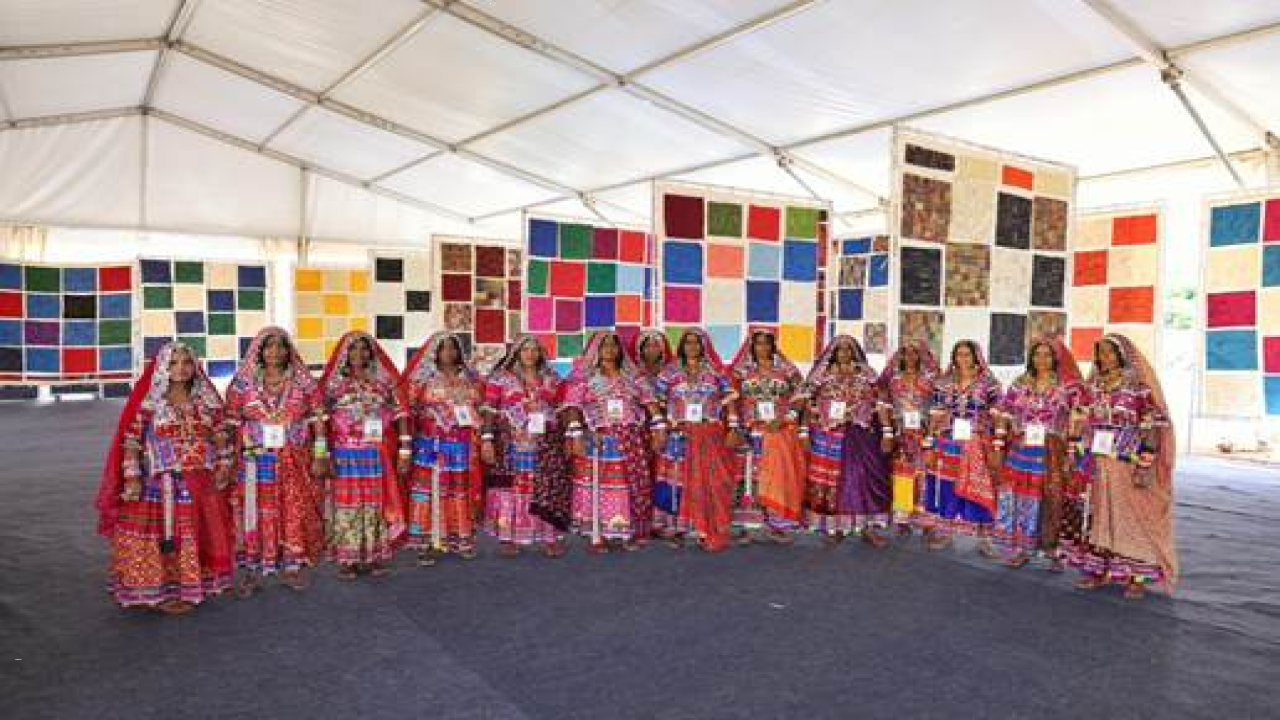Guinness World Record Created for Lambani Art
India’s G20 Presidency recently achieved a remarkable feat by setting a new Guinness World Record. The record-breaking event involved the largest display of Lambani items, showcasing the rich cultural heritage of India. The exhibition, aptly titled “Threads of Unity,” was inaugurated in the historic city of Hampi.
Setting a Record: Largest Display of Lambani Items
India’s G20 Presidency left an indelible mark by showcasing a staggering total of 1755 Lambani items, securing the coveted title for the “largest display of Lambani items” in the Guinness World Records. This achievement not only highlights the diversity of Indian art but also sheds light on the talent and craftsmanship of Lambani artisans.
Empowering Lambani Artisans
The success of this record-breaking endeavor owes much to the dedication and skills of Lambani women artisans and cultural practitioners. More than 450 talented individuals associated with the Sandur Kushala Kala Kendra Kendra (SKKK) came together to create these exquisite Lambani items. Their involvement highlights the significant role of Lambani embroidery in providing livelihoods and economic empowerment to these skilled artisans.
Preserving Cultural Heritage: Lambani Embroidery
Lambani embroidery is a vibrant and intricate textile embellishment characterized by colorful threads, mirror work, and exquisite stitch patterns. Predominantly practiced in the state of Karnataka, Lambani embroidery is a living testament to the cultural heritage of India. The interconnectedness of Lambani craft with textile traditions across Eastern Europe, West Asia, and Central Asia underlines the shared artistic culture and historical migration of nomadic communities.
Aligning with Sustainable Initiatives
The Guinness World Record achievement is aligned with the Prime Minister’s campaign of Mission ‘LiFe’ (Lifestyle for environment) and the Culture Working Group’s initiative for ‘Culture for LiFe,’ promoting an environmentally conscious lifestyle and sustainability. By embracing Lambani embroidery, which involves the sustainable practice of patchworking, this record-breaking event exemplifies the fusion of art and environmental consciousness.
Recognizing Sandur Kushala Kala Kendra (SKKK)
Sandur Kushala Kala Kendra (SKKK), a society registered in 1988, has played a pivotal role in reviving traditional crafts and uplifting the livelihoods of Lambani craftswomen. SKKK’s Lambani craft has achieved acclaim at both national and international levels, being honored with the prestigious UNESCO Seal of Excellence for Handicrafts in South Asia in both 2004 and 2012. Furthermore, SKKK obtained the Geographical Indication (GI) tag for ‘Sandur Lambani hand embroidery’ in 2008, further cementing the significance of this art form.
Month: Current Affairs - July, 2023
Category: Art & Culture Current Affairs • India Nation & States Current Affairs






